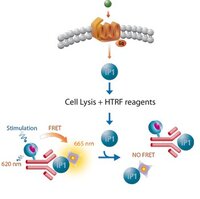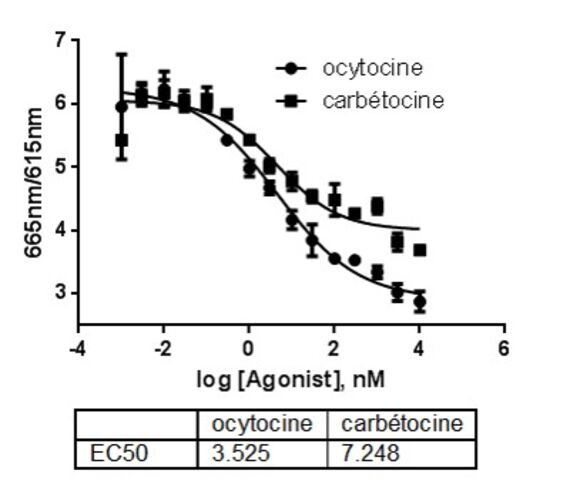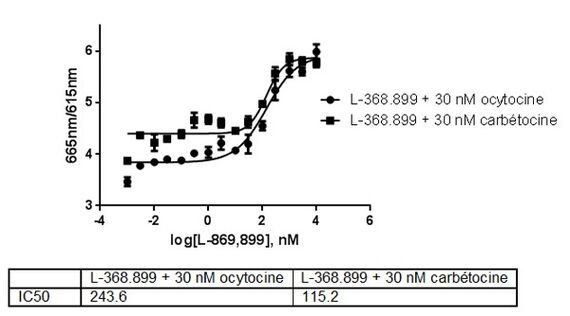Introduction
The detection of intracellular second messengers such as IP1, produced following the activation of receptors coupled to Gq proteins, can be achieved by HTRF® technology.
The HTRF® technology (CISBIO) is based on the basic principle of FRET.
The properties of the fluorophores used provide many advantages.



